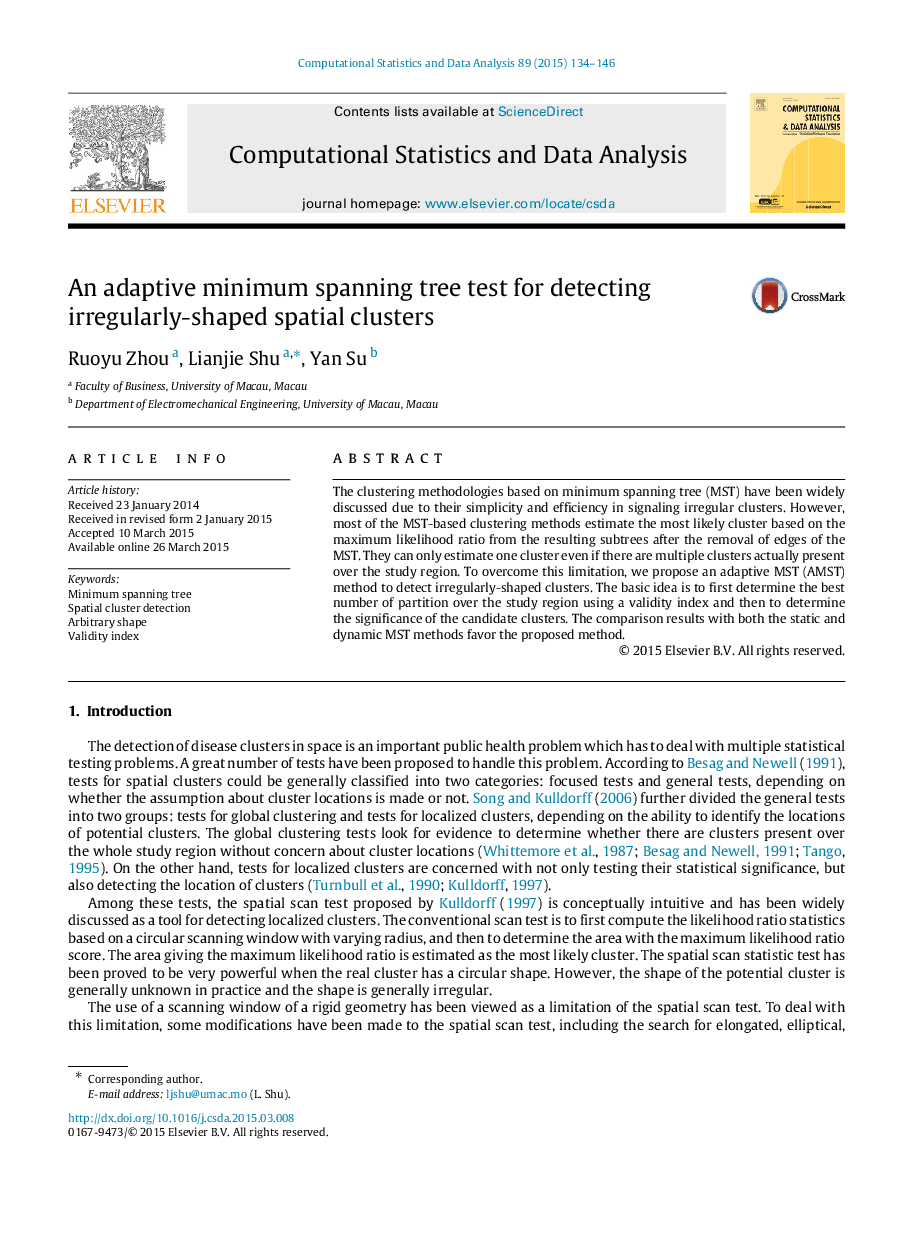| Article ID | Journal | Published Year | Pages | File Type |
|---|---|---|---|---|
| 6869531 | Computational Statistics & Data Analysis | 2015 | 13 Pages |
Abstract
The clustering methodologies based on minimum spanning tree (MST) have been widely discussed due to their simplicity and efficiency in signaling irregular clusters. However, most of the MST-based clustering methods estimate the most likely cluster based on the maximum likelihood ratio from the resulting subtrees after the removal of edges of the MST. They can only estimate one cluster even if there are multiple clusters actually present over the study region. To overcome this limitation, we propose an adaptive MST (AMST) method to detect irregularly-shaped clusters. The basic idea is to first determine the best number of partition over the study region using a validity index and then to determine the significance of the candidate clusters. The comparison results with both the static and dynamic MST methods favor the proposed method.
Related Topics
Physical Sciences and Engineering
Computer Science
Computational Theory and Mathematics
Authors
Ruoyu Zhou, Lianjie Shu, Yan Su,
